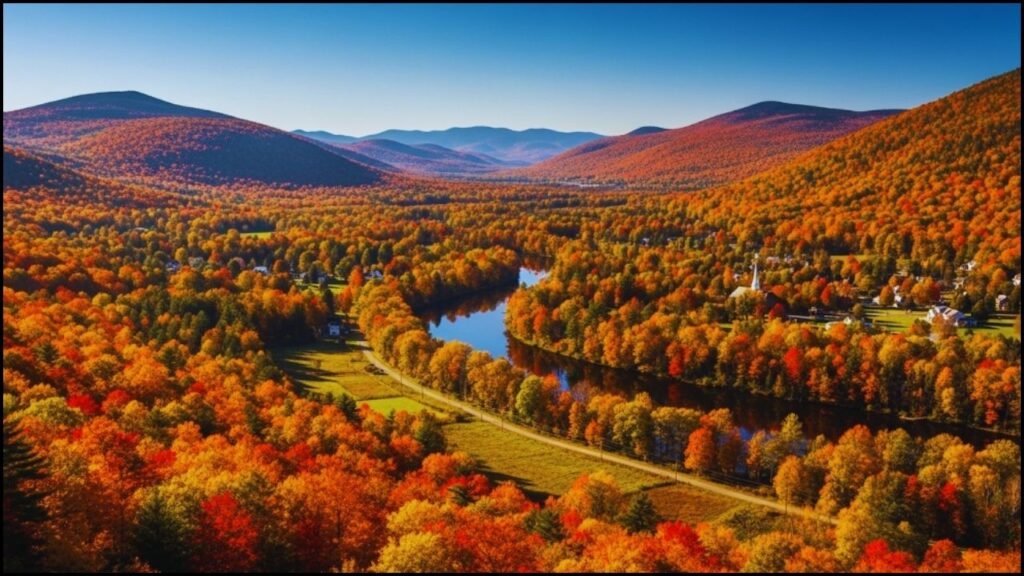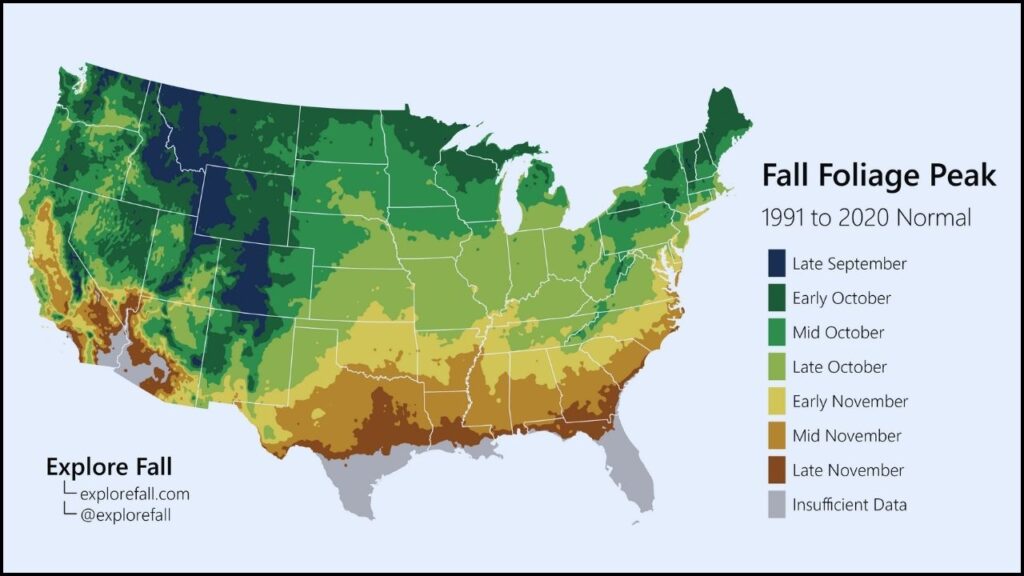
A combination of summer weather patterns and long-range climate models suggests the United States is heading for a vibrant and slightly delayed autumn display in many regions. The 2025 season for peak fall foliage is expected to arrive up to a week later than historical averages in parts of the Northeast and Midwest, according to several forecasts. This delay, driven by warmer-than-average temperature predictions for September, could extend the viewing season for millions of Americans and tourists. However, experts caution that local weather conditions over the next several weeks will be the final determinant of the timing and intensity of the autumn leaves.
2025 U.S. Fall Foliage Outlook
| Key Region | Predicted Peak Period | Primary Influencing Factors |
| New England | Early to Mid-October | Warmer September may delay onset; adequate summer rain promises vibrant colors. |
| Appalachians | Mid-October to Early November | Ideal conditions; gradual elevation change allows for an extended season. |
| Midwest | Late September to Mid-October | Mixed precipitation levels; northern states may see earlier, faster change. |
| Rocky Mountains | Mid to Late September | Aspen groves are highly dependent on recent moisture and first frost timing. |
The Science Behind the Scenery
The annual transformation of the landscape is a complex biological process. The brilliant fall colors are a result of chemical changes in the leaves as trees prepare for winter. As days shorten and temperatures cool, trees slow down the production of chlorophyll, the green pigment responsible for photosynthesis. According to the U.S. Forest Service, as the green fades, it unmasks yellow and orange pigments called carotenoids that were present all along.
“The most brilliant reds and purples come from anthocyanins,” said Dr. Samuel Reed, a professor of forest ecology at the University of Vermont. “These pigments are produced in late summer, and their intensity is a direct response to weather. The ideal recipe is a series of warm, sunny days followed by cool, crisp nights above freezing.”
The 2025 National Peak Fall Foliage Forecast
Regional variations are significant, and the foliage forecast is shaped by both long-term climate and short-term weather.

New England and the Northeast
Traditionally the first region to showcase color, New England’s display is predicted to begin in earnest in late September in the far northern parts of Maine, New Hampshire, and Vermont. The peak fall foliage for most of the region is expected between October 5th and 19th. A warmer-than-average September forecast by the National Oceanic and Atmospheric Administration (NOAA) is the primary reason for the potential one-week delay.
The Appalachians and Southeast
The long chain of the Appalachian Mountains offers one of the most extended viewing seasons. Colors will begin appearing at the highest elevations in West Virginia and Virginia in early October. The display will then cascade southward and to lower elevations, with the Blue Ridge Parkway and Great Smoky Mountains National Park likely reaching their peak from mid-October to the first week of November.
“The Smokies benefit from an incredible diversity of tree species, which means you get a staggered and varied color palette,” a spokesperson for the National Park Service explained in a recent press release.
The Midwest and West
In the Midwest, states like Michigan’s Upper Peninsula, Wisconsin, and Minnesota will see color emerge in late September. The peak is forecast to move south through mid-October. This region’s vibrancy is highly dependent on rainfall over the next month, as some areas experienced a dry late summer. Out West, the show is dominated by the brilliant yellow and gold of aspen trees. In the Rocky Mountains of Colorado and Utah, aspen groves are expected to peak between mid-September and early October. These displays are often fleeting, as an early snow or windstorm can strip the delicate leaves quickly.
Weather Remains the Decisive Factor
Experts universally agree that forecasts made in August are robust models but remain subject to change. An unexpected heatwave in late September can mute colors, while an early, hard frost can cause leaves to brown and drop prematurely.
“We look at soil moisture, long-range temperature outlooks, and historical patterns to build these predictions,” said Dr. Reed. “But the weather in the two weeks leading up to a region’s historical peak is what truly fine-tunes the display. That’s why we always advise people to check local foliage reports before traveling.”
State tourism boards and forestry departments often provide weekly, and sometimes daily, updates on their websites as the season progresses. These hyper-local reports are invaluable for visitors planning to see the colors at their absolute best. The 2025 season appears promising, with sufficient summer rainfall in many key areas setting the stage for strong pigment development. Barring any extreme weather events in the coming weeks, travelers and residents across much of the country can anticipate a brilliant display of fall colors.
Bed Bug Season Intensifies as 2025 Reports Name Top Infested Cities
